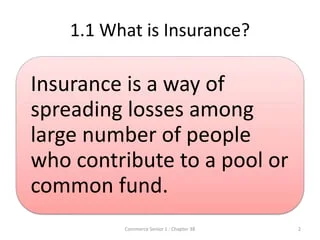Pacific Prime Fundamentals Explained
Pacific Prime Fundamentals Explained
Blog Article
The Ultimate Guide To Pacific Prime
Table of ContentsHow Pacific Prime can Save You Time, Stress, and Money.The Definitive Guide for Pacific PrimePacific Prime - The FactsIndicators on Pacific Prime You Should KnowThe Only Guide to Pacific Prime

This is due to the fact that the data were gathered for a duration of strong financial performance. Of the estimated 42 million individuals that were uninsured, just about concerning 420,000 (about 1 percent) were under 65 years of age, the age at which most Americans become eligible for Medicare; 32 million were grownups in between ages 18 and 65, around 19 percent of all grownups in this age group; and 10 million were youngsters under 18 years old, about 13.9 percent of all kids (Mills, 2000).
These price quotes of the variety of persons uninsured are generated from the yearly March Supplement to the Existing Populace Survey (CPS), conducted by the Demographics Bureau. Unless or else kept in mind, nationwide estimates of individuals without health and wellness insurance coverage and percentages of the populace with different type of insurance coverage are based upon the CPS, one of the most extensively used source of quotes of insurance coverage and uninsurance prices.
The smart Trick of Pacific Prime That Nobody is Talking About

Still, the CPS is specifically beneficial because it generates annual price quotes relatively quickly, reporting the previous year's insurance policy coverage estimates each September, and due to the fact that it is the basis for a regular collection of estimates for greater than twenty years, allowing for analysis of patterns in protection gradually. For these factors, in addition to the substantial use the CPS in various other researches of insurance policy coverage that are presented in this report, we rely upon CPS quotes, with limitations kept in mind.

The quote of the number of uninsured individuals expands when a population's insurance condition is tracked for several years. Over a three-year period beginning early in 1993, 72 million individuals, 29 percent of the united state population, were without protection for at the very least one month. Within a solitary year (1994 ), 53 million individuals experienced a minimum of a month without protection (Bennefield, 1998a)
Six out of every ten without insurance adults are themselves utilized. Although functioning does enhance the likelihood that and one's relative will certainly have insurance coverage, it basics is not a guarantee. Also participants of family members with two full time breadwinner have nearly a one-in-ten opportunity of being uninsured (9.1 percent uninsured price) (Hoffman and Pohl, 2000).
Pacific Prime Can Be Fun For Everyone
New immigrants account for a significant proportion of people without medical insurance. One analysis has actually attributed a substantial section of the recent growth in the size of the U.S. without insurance population to immigrants who showed up in the country in between 1994 and 1998 (Camarota and Edwards, 2000). Recent immigrants (those that came to the United States within the past four years) do have a high rate of being without insurance (46 percent), but they and their youngsters account for just 6 percent of those without insurance nationally (Holahan et al., 2001).
The relationship between wellness insurance policy and accessibility to care is well developed, as documented later in this phase. The connection in between wellness insurance and wellness end results is neither straight neither basic, a comprehensive clinical and health and wellness services study literary works web links health and wellness insurance policy protection to improved access to care, better top quality, and enhanced individual and population health and wellness condition.
Levels of analysis for examining the results of uninsurance. It focuses especially on those without any wellness insurance coverage for any kind of size of time.
Some Known Factual Statements About Pacific Prime
The issues dealt with by the underinsured are in some respects comparable to those dealt with by the uninsured, although they are usually much less severe. Health insurance coverage, nonetheless, is neither needed neither sufficient to gain access to medical solutions. The independent and direct effect of wellness insurance policy protection on accessibility to health and wellness solutions is well developed.
Others will acquire the health and wellness care they require even without medical insurance, by paying for it out of pocket or seeking it from providers that offer care totally free or at highly subsidized prices. For still others, medical insurance alone does not guarantee invoice of care because of other nonfinancial obstacles, such as a lack of healthcare service providers in their community, restricted accessibility to transportation, illiteracy, or etymological and social distinctions.
The smart Trick of Pacific Prime That Nobody is Discussing
Formal research regarding without insurance populaces in the United States dates to the late 1920s and very early 1930s when the Committee on the Price of Healthcare generated a collection of reports regarding financing physician workplace sees and hospitalizations. This problem ended up being prominent as the numbers of clinically indigent climbed throughout the Great Depression.
Report this page